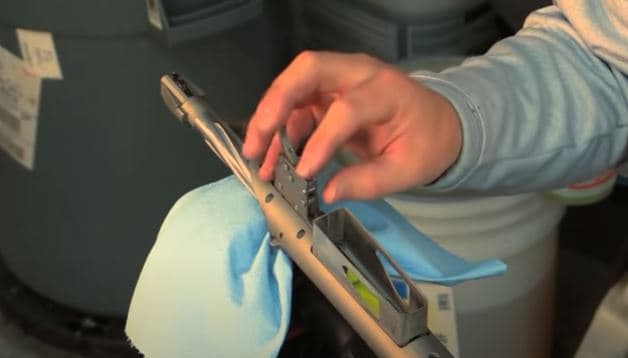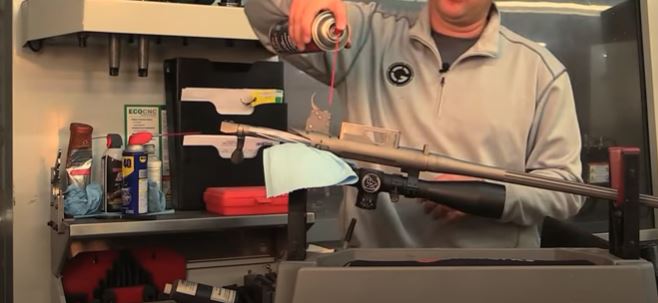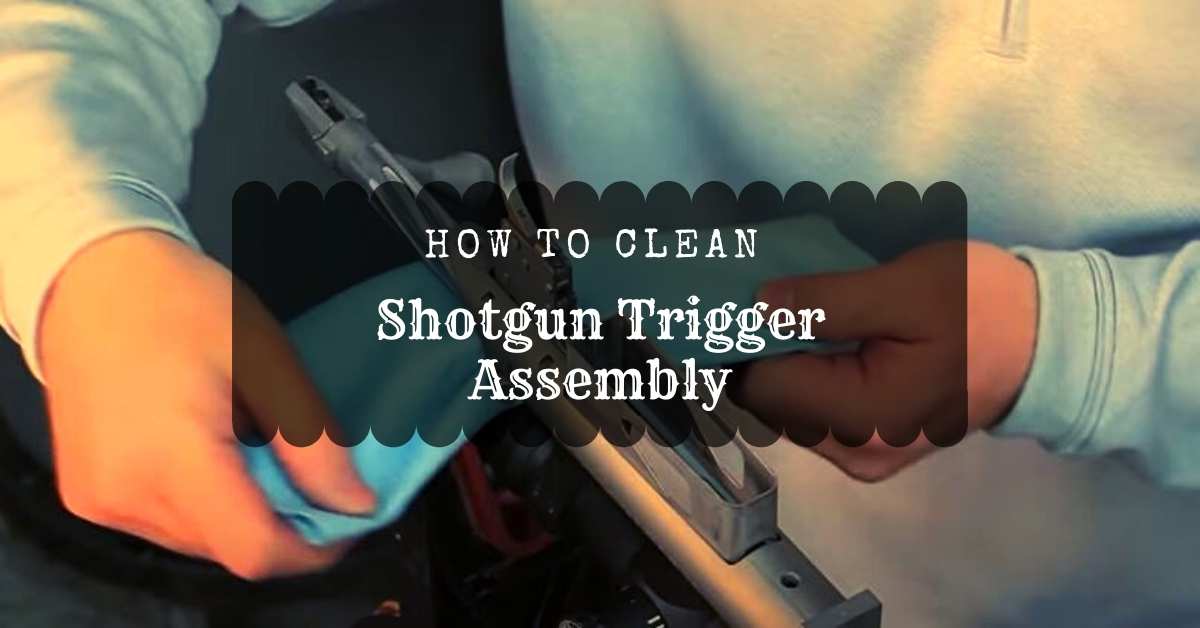How to Clean Shotgun Trigger Assembly
Hunting is a sport for gentlemen. Who wouldn’t like to spend a few days shooting in Argentina this season? But, before you head out and spend some great days in the woods, make sure your gun is clean and in good working order. So, how do you clean the trigger assembly on a shotgun?
You must disassemble the firearm in order to clean the trigger. However, before you begin the procedure, you must first discharge the pistol to ensure your safety. Remove the filth with a piece of cloth after dismantling. Easy peasy, right!
The cleaning, however, does not end there. Continue reading to learn more about the cleaning process in detail.
How to Clean Shotgun Trigger Assembly?

The best way to clean your trigger assembly is to start by reading the manual given with the gun. You see, not all guns are built the same and work the same.
To me, it all depends on the gun’s requirements. Take, for example, semi-automatic gun trigger assembly. When you use a clean-burning powder, your trigger assembly should last longer than when you use a dirty powder.
So, let’s get into cleaning the trigger assembly.
Step 1: Removing the Trigger Plate
When you have your gun in your hand, the first thing you should do is remove the trigger plate gently. The area where the barrel is exposed is most prone to dust and rust.
Step 2: Brushing the Trigger Plate
Grab a paintbrush and cleanse the exposed areas thoroughly. The gun oil can tend to get greasy and stay in the Trigger Plate area. You can also use a cotton bud for this.
Step 3: Rub the Surface with A Towel and Oil
When you are sure there is no foreign object on the surface, get a towel and a little oil. Rub the surface thoroughly.
Step 4: Release the Trigger Assembly
Push the thumb release in the back of the trigger to release the trigger assembly. Be careful when you un-clock the trigger, it can hurt your fingers if you fire the trigger accidentally.
Step 5: Releasing and Cleaning the Trigger Assembly
Remove any ugly build-up with the paintbrush and dump it. Grease and gun powder can be seen or found in the internals. Use the cotton bud to reach any hard-to-reach regions once again.
It’s critical to use soft materials because you don’t want to risk breaking any of your gun’s mechanics. Please take care not to shatter your finger in this process. Simply remove any filthy oil, grease, or other residues.
Step 6: Wipe It All Off
Wipe everything with a dry towel and keep the Trigger Assembly in the open so that it completely dries. Now it is time to reassemble your clean gun back.
Should I Oil My Trigger Assembly?

Triggers should not be greased, and some come with warnings about them. Geissele is the only exception, recommending lubing but then blowing out the extra oil using a pressure hose. You can use lighter fluid. Try to blow for as long as you can and use a dry towel to wipe off the excess. When the liquid runs clear, job well done.
Can I Use Brake Cleaner to Clean My Gun?
While you can clean your gun using brake cleaner, and it will still do a good job, brake cleaner will remove all of the oils in your rifle. After using brake cleaner, you’ll need to re-oil it everywhere.
Although brake cleaning is not hazardous to metal finishes, it can affect stock coating by removing oil. It also eats away at plastic parts and loosens painted decorations. Brake cleaner will not harm your weapons as far as you re-oil each part of it.
Is Gun Scrubber and Brake Cleaner the Same Thing?
The chemical composition of a gun scrubber and a brake cleaner is nearly identical. If you’re going to use brake cleaner, be sure it’s not chlorine-based. Because both the gun scrubber and the brake cleaner are degreasers, they must be re-oiled after each use.
When compared to a gun scrubber, brake cleaner takes longer to dry. Gun scrubber, on the other hand, dries quickly and leaves no residue. Aside from that, there isn’t much of a difference between a gun scrubber and a brake cleaner when it comes to gun cleaning.
Best Way to Guarantee Shooting Safely
You might want to go the extra mile and remove the rifle from storage every 30-45 days and wipe clean the mechanisms with an oil-impregnated towel.
When the next hunting season arrives, the last thing you want to see is your gun getting rust or crud.
New, shooters should start with one of the maintenance kits, which typically include brush, patches, rods, solvents, waxes, and anything else you’ll need to keep your shotgun spotless.
The safety aspect of maintaining your shotgun is maybe the most important. You don’t want others to witness you struggling with a jammed shotgun? If the shotgun is aimed in the wrong direction, safety is compromised.
What Can You Clean A Shotgun With?
Different guns will need different approaches. You can buy complete gun cleaning kits available in the market. However, there are a few tools that are required for gun cleaning.
- Rod for cleaning
- Brush for the bore (caliber specific)
- Jags for cleaning (slotted and form-fitting)
- Swab for cleaning
- Mops
- Brushes with two ends/utility brushes
- Patches for cleaning (caliber specific, lint and fiber-free)
- Gun and Reel Cloth with Luster/Silicone Impregnation
- Swabs of cotton
- Bore cleansers, action cleaning agents, and lubricants like chemicals for cleaning
- Drip pan (disposable)
How Often Should I Clean My Trigger Assembly?
Cleaning circumstances vary depending on the gun, shells, and atmosphere. Many of the owners clean their rifles after each shooting session. Others (like me) clean our firearms only when our pals who clean their guns all the time start pointing fingers at us and leave the room. Something in the middle is probably the best option.
Conclusion
If you are reading this, I hope you got your answer on how to clean shotgun trigger assembly. It is not so hard if you follow the steps accordingly.
But be safe when you are handling a gun, as things can get serious at any moment. Buy the necessary things if possible as they will serve you in the long run. Happy hunting!

